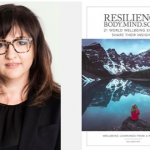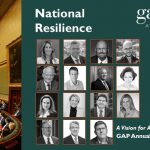The time for resilience is now

This is an edited summary of Commissioner Fitzsimmons’ keynote address presented at the ‘A Vision for Australia 2020’: GAP Virtual Summit on National Resilience.’
Commissioner Fitzsimmons outlined several leadership traits which NSW and the nation will need in the effort to build more resilient individuals and communities.
The first is authenticity, as honesty and clarity regarding what we are as a nation and the issues and challenges we face are required. Difficult problems should not be shied away from, and despite their different views and perspectives, diverse communities can be convinced of the need for greater resilience through humility and empathy. Decisions must be evidence-based, and clear and constant communication is required regarding what is known and unknown, and what measures are required.
The authorities must demonstrate they care about communities, and leadership is required to build trust and confidence across the state and nation.
Communities across NSW faced crippling drought and devastating bushfires at the turn of last year which cost the lives of 26 people, including four firefighters and three air crew. These disasters were followed by floods and COVID-19 restrictions, further affecting people’s livelihoods and mental health.
These challenges prompted the NSW Government to adopt a more comprehensive approach to disaster management and emergency planning, response and recovery by establishing a new organising body. The compounding effect of recent disaster events has proved the need for better cohesion, coordination and leadership to give confidence to citizens, communities and companies in the future.
Resilience NSW is now an executive agency in the State Government, working with the Premier and Cabinet cluster to ensure that necessary frameworks are put in place across all government departments. The new body contemplates planning and investment, as well as responding to emergencies and supporting recovery and rebuilding after disaster events.
An independent state inquiry into the bushfire emergency offered 76 recommendations, and the federal Royal Commission into National Natural Disaster Arrangements provided 80 more, but community feedback has also shaped the new agency’s architecture and operations. Local, state and federal government agencies must work with communities on flood and fire recovery and preventative measures to ensure effective frontline delivery.
The floods revealed a lack of investment by local governments in support mechanisms, for example, while the number and organisation of local emergency management officers vary from one council to the next. A more coordinated multi-agency, multi-state or national effort is required, and Resilience NSW will help improve overall strategy and on-the-ground organisation in cooperation with communities, not-for-profits and other government agencies.
It will also help local communities and councils across NSW to build a more coherent and consistent resilience culture, in line with Royal Commission’s findings. It will also feed information on vulnerabilities, stresses and recovery needs from the grassroots to decision makers regarding both natural and man-made disasters. This will inform the creation of critical infrastructure, telecommunications and cyber-resilience to help individuals and communities cope with a wide range of potential disruption.
The 2019-2020 bushfire season was unprecedented, but worse is likely to come, and so preparation for such out-of-scale events must proceed, using local knowledge in detailed terms, followed by appropriate investment. Emotional and psychological healing, as well as infrastructure recovery, is required after damaging events, to help individuals bounce back and communities build back better.
Shane Fitzsimmons AFSM is the Head of Resilience NSW and previously served as the Commissioner of the New South Wales Rural Fire Service between September 2007 and April 2020.








